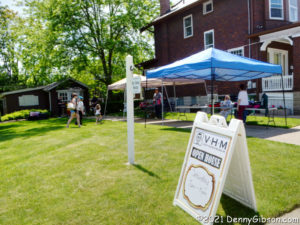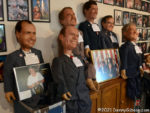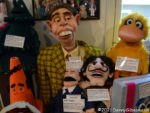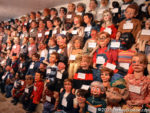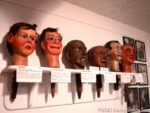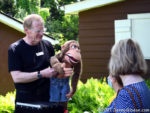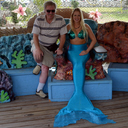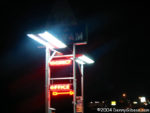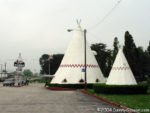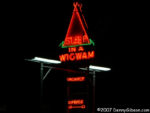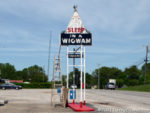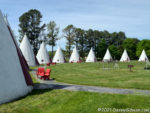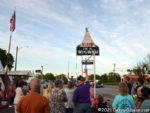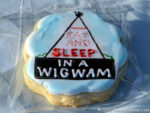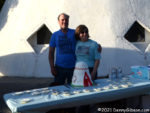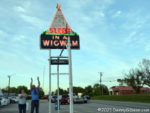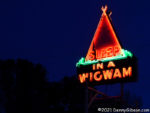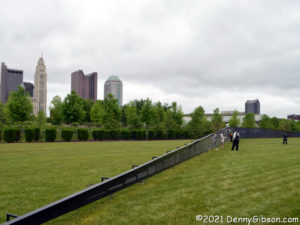 I have seen the real Vietnam Memorial Wall in Washington, DC, multiple times and a traveling version once. When I heard that a wall replica would be on display in Columbus over the Memorial Day weekend, I didn’t really feel an overwhelming need to see it. However, when I woke up Saturday morning, that’s exactly what I wanted to do.
I have seen the real Vietnam Memorial Wall in Washington, DC, multiple times and a traveling version once. When I heard that a wall replica would be on display in Columbus over the Memorial Day weekend, I didn’t really feel an overwhelming need to see it. However, when I woke up Saturday morning, that’s exactly what I wanted to do.
 The Columbus display is hosted by the National Veterans Memorial and Museum. I have long been annoyed by people confusing Veterans Day and Memorial Day, and arrangements such as this may inadvertently contribute to the blurring of the two. They are not, of course, completely separable. They are two sides of the same coin or two branches of the same path. Everyone who joins the military will someday be honored by one — but not both — of these holidays.
The Columbus display is hosted by the National Veterans Memorial and Museum. I have long been annoyed by people confusing Veterans Day and Memorial Day, and arrangements such as this may inadvertently contribute to the blurring of the two. They are not, of course, completely separable. They are two sides of the same coin or two branches of the same path. Everyone who joins the military will someday be honored by one — but not both — of these holidays.
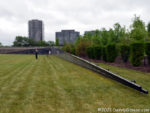
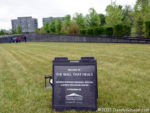 “The Moving Wall” is a half-sized replica that began touring in 1984. At some point, a second copy was created. It was one of these that I saw in 2008. The replica displayed in Columbus is a different one called “The Wall That Heals”. At 3/4 the size of the original, it provides a rather realistic experience. The openness of the museum grounds combined with the fact that I was there before much of a crowd appeared, allowed me to get the entire wall into a single photo. These pictures were taken a little before 9:00 AM. The museum opens at 10:00 and I’m sure the number of people on site picked up considerably then.
“The Moving Wall” is a half-sized replica that began touring in 1984. At some point, a second copy was created. It was one of these that I saw in 2008. The replica displayed in Columbus is a different one called “The Wall That Heals”. At 3/4 the size of the original, it provides a rather realistic experience. The openness of the museum grounds combined with the fact that I was there before much of a crowd appeared, allowed me to get the entire wall into a single photo. These pictures were taken a little before 9:00 AM. The museum opens at 10:00 and I’m sure the number of people on site picked up considerably then.
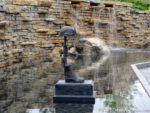 I visited the museum shortly after it first opened in 2018 and described the visit here. I did not enter the museum today. I did walk some of the paths and ramps that surround it. Although officially a place for and about veterans, even without the wall, the museum has several reminders that many who set out to become veterans never make it.
I visited the museum shortly after it first opened in 2018 and described the visit here. I did not enter the museum today. I did walk some of the paths and ramps that surround it. Although officially a place for and about veterans, even without the wall, the museum has several reminders that many who set out to become veterans never make it.
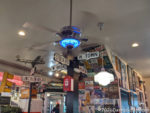
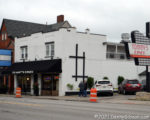 Any morning in Columbus is a good time for breakfast at Tommy’s Diner, but that seems especially true when the day’s destination is less than a mile away.
Any morning in Columbus is a good time for breakfast at Tommy’s Diner, but that seems especially true when the day’s destination is less than a mile away.

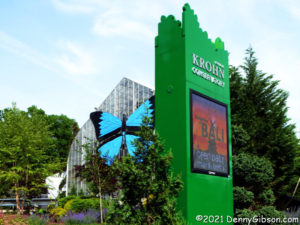
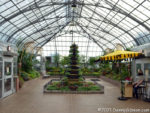
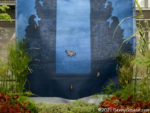

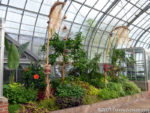








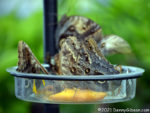
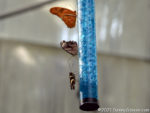

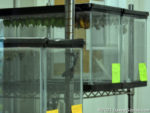
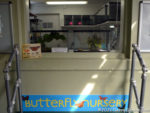
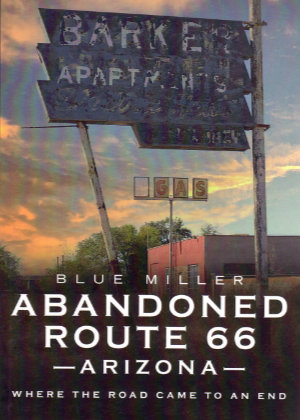 If I maintained a list of questions I frequently ask myself, “Why another Route 66 book?”, would be high on the list. I have never arrived at a reason that another one is actually needed; only justifications for ones at hand. Those justifications generally take the form of answers to two questions. They are, “What makes this book different from all others?”, and “Why should I buy it?” In practice, I ask them in the reverse order which means that, if I don’t have a good reason to buy a book, I’ll probably never get around to discovering what, if anything, makes it different.
If I maintained a list of questions I frequently ask myself, “Why another Route 66 book?”, would be high on the list. I have never arrived at a reason that another one is actually needed; only justifications for ones at hand. Those justifications generally take the form of answers to two questions. They are, “What makes this book different from all others?”, and “Why should I buy it?” In practice, I ask them in the reverse order which means that, if I don’t have a good reason to buy a book, I’ll probably never get around to discovering what, if anything, makes it different.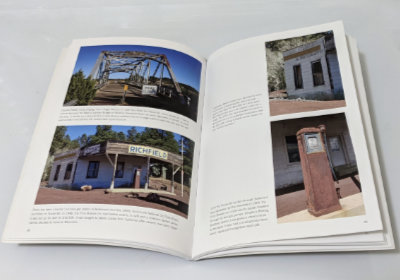 Although not of the coffee table variety, this is first and foremost a photo book. It contains upward of a hundred photographs, in color, printed on good quality semi-gloss paper. They are primarily documentary photos. That does not mean that they are boring, but it does mean that properly recording each subject is the main goal. The book is certainly not without its share of creative composition, but there are no abstract-light-patterns-on-pavement style pictures. There are usually two or more photos on a page for a max size somewhere around 5.5 by 3.5 inches. That might keep you from displaying it on your coffee table, but it is plenty big enough to show off bridges, buildings, and signs.
Although not of the coffee table variety, this is first and foremost a photo book. It contains upward of a hundred photographs, in color, printed on good quality semi-gloss paper. They are primarily documentary photos. That does not mean that they are boring, but it does mean that properly recording each subject is the main goal. The book is certainly not without its share of creative composition, but there are no abstract-light-patterns-on-pavement style pictures. There are usually two or more photos on a page for a max size somewhere around 5.5 by 3.5 inches. That might keep you from displaying it on your coffee table, but it is plenty big enough to show off bridges, buildings, and signs.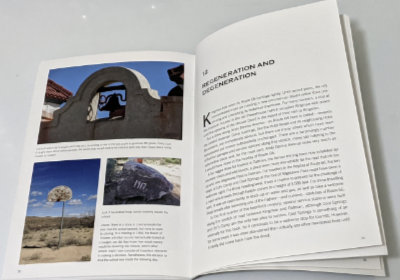 Yes, the pictures are cool and those of some fairly obscure places enlightening, but it is the words that made me happy with my purchase. The histories of most of the pictured buildings are told. Some are reasonably well known and available elsewhere, but Miller’s telling is both complete and concise. Others are not so well known, and I’ve little doubt that Miller’s aforementioned sleuthing ability brought out some details and possibly some entire stories. Maybe others knew all those details about the schools of Valentine, but I sure didn’t, and the story of the Ostermans and Peach Springs was all new to me. There are other examples of what I take to be sleuthing in the book, and all of them add to my appreciation of it.
Yes, the pictures are cool and those of some fairly obscure places enlightening, but it is the words that made me happy with my purchase. The histories of most of the pictured buildings are told. Some are reasonably well known and available elsewhere, but Miller’s telling is both complete and concise. Others are not so well known, and I’ve little doubt that Miller’s aforementioned sleuthing ability brought out some details and possibly some entire stories. Maybe others knew all those details about the schools of Valentine, but I sure didn’t, and the story of the Ostermans and Peach Springs was all new to me. There are other examples of what I take to be sleuthing in the book, and all of them add to my appreciation of it.